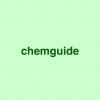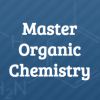Alright, by now you should have a pretty good understanding of what molecules look like when they have a carbon chain, how they orient themselves, how to name them, etc. Let’s mix it up a little by making things a tiny bit more complicated—let’s add double bonds to the mix. A molecule with a carbon chain containing one or more double bonds is known as an alkene. That means a ring structure with a double bond is ( … you guessed it) a cycloalkene. This double bond opens up a whole new world of possibilities in terms of nomenclature and reactions.
The first thing to learn about alkenes is naming them. The bad news is that there are new rules to learn since we introduced a new component to our molecule. The good news is there isn’t that much more to learn, and the majority of the rules for nomenclature are exactly the same. The main difference now is that the double bond will be the priority—over chain length and functional groups—in terms of naming the alkene.
Another important thing to note is how the double bond affects the geometry of the molecule. This would be another good time to break out the model kit to visualize this geometry in 3D. You should also note that a good way to identify an alkene, based only on the formula, is the number of hydrogens compared to the number of carbons—alkenes will have 2n hydrogen atoms, with n being the number of carbon atoms.
Make sure you are familiar with alkenes, because these will probably be the most important building blocks for the next sections of Organic Chemistry—the majority of reactions you will learn in this course will involve alkenes.






